On Puerto Rico's 'Monkey Island,' life is hard after Maria
As Hurricane Maria barreled across the Caribbean one month ago, one of the first places to get caught in the eye of the storm was Cayo Santiago, a small island off Puerto Rico’s southeastern coast that is populated only by monkeys.
These aren’t just any monkeys, however. The 1,000 free-ranging rhesus macaques that make their homes on Cayo Santiago — also known as Monkey Island — inhabit the world’s oldest wild primate research center. Since 1938, when their ancestors were shipped there from Asia, scientists from around the globe have flocked to this tiny island in the Caribbean to study primate behavior, physiology and psychology.
Researchers at Cayo Santiago recorded the sounds made by female macaques and concluded they employed baby talk with infants, behavior that was thought to be exclusively human. Others observed females over long periods to detect subtle changes in skin color correlated with sexual receptivity.
Now an international group of researchers are joining forces to save Monkey Island, and its human caretakers, in the aftermath of Hurricane Maria, whose 150 mile-per-hour winds whipped across Cayo Santiago and the nearby community of Punta Santiago, home to many of the Caribbean Primate Research Center’s employees and researchers. Though all the monkeys have been accounted for, the hurricane ravaged much of their home territory, as well as that of their human neighbors.
“Many adjectives have been used by colleagues to describe the situation there, including ‘catastrophic,’ ‘total destruction,’ ‘devastating’ and ‘apocalyptic,’” said Amanda Accamando, who worked at the CPRC from 2004 to 2007. Along with Lauren Brent, a lecturer with the University of Exeter who has conducted research on Cayo Santiago for more than 10 years, Accamando has helped raise almost $29,000 for CPRC employees and their families.
Accamando told Yahoo News that she and Brent have been in direct contact with Angelina Ruiz-Lambides, the associate director of Cayo Santiago, to identify employees’ most pressing needs and how to best direct their donations. The town of Punta Santiago suffered severe destruction as a result of the hurricane. Located approximately 40 miles from San Juan, it is one of the many communities that became almost unreachable in the wake of the storm.
The homes of at least two CPRC employees have been destroyed or deemed “unlivable,” while three others have experienced extensive flood damage and some roof damage, according to an update posted to Accamando and Brent’s GoFundMe page Wednesday morning.
Amid their own devastation, however, Cayo Santiago staff members still managed to get to Monkey Island to check on the primates and, with the help of colleagues from NYU Primatology, were able to survey the damage to the island from a helicopter.
“They are still assessing the damage to CPRC, but we expect that the damage will be severe if not total,” Accamando told Yahoo News. “The research facilities on Cayo Santiago are destroyed.”
Laurie Santos, a Yale psychologist who has been studying primate psychology on Cayo Santiago since the 1990s, added that while it “is amazingly good news” that all of the island’s precious primates survived the storm, “the bad news is that all of the infrastructure on the island was completely destroyed, as well as much of the vegetation.”
Now that the storm has passed, Accamando explained, “the biggest concern for the animals on the island is similar to that of the people of Puerto Rico — reliable sources of food and fresh water.”
Beyond addressing the immediate and pressing needs of Cayo Santiago’s human neighbors, the main focus for the Primate Center — and similar facilities around the globe — will be to rebuild the island’s natural water collection systems and food resources to keep the monkeys alive.
“This fragile population somehow weathered this awful storm, but we need to act quickly to save them and the important scientific possibilities they represent,” said Michael Platt, a neuroscientist at the University of Pennsylvania whose research on autism has been conducted in part among the primates of Cayo Santiago. “Unless we immediately rebuild the infrastructure on the island as well as the lives of the people that support it, this important resource may disappear.”
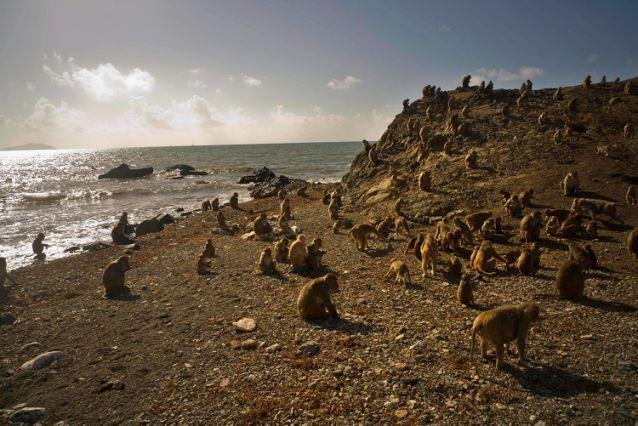
Monkeys move about on Cayo Santiago
Monkeys move about on Cayo Santiago, known as Monkey Island, in Puerto Rico on Oct. 4, 2017. One of the first places Hurricane Maria hit in the U.S. territory Sept. 20 was Monkey Island, a 40-acre outcropping off the east coast that is one of the worldâs most important sites for research into how primates think, socialize and evolve.
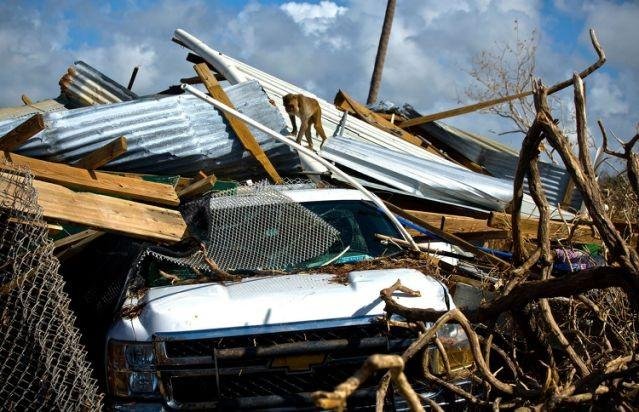
A monkey walks over the rubble
A monkey walks over the rubble left in the wake of Hurricane Maria on Cayo Santiago, known as Monkey Island, in Puerto Rico, one of the worldâs most important sites for research into how primates think, socialize and evolve, on Oct. 4, 2017. The storm destroyed virtually everything on the island, stripping it of vegetation, wrecking the monkeysâ metal drinking troughs and crushing the piers that University of Puerto Rico workers use to bring in bags of monkey chow, brown pellets of processed food that complete the primatesâ natural vegetation diet.
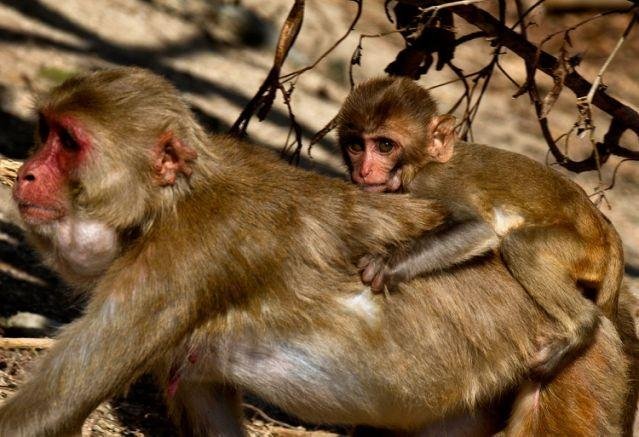
A female carries her baby
A female monkey carries her baby on her back on Cayo Santiago, known as Monkey Island, in Puerto Rico on Oct. 4, 2017. Every animal born on the island is tattooed for easy identification, and the skeleton of every one that has died over nine generations has been saved for future reference.
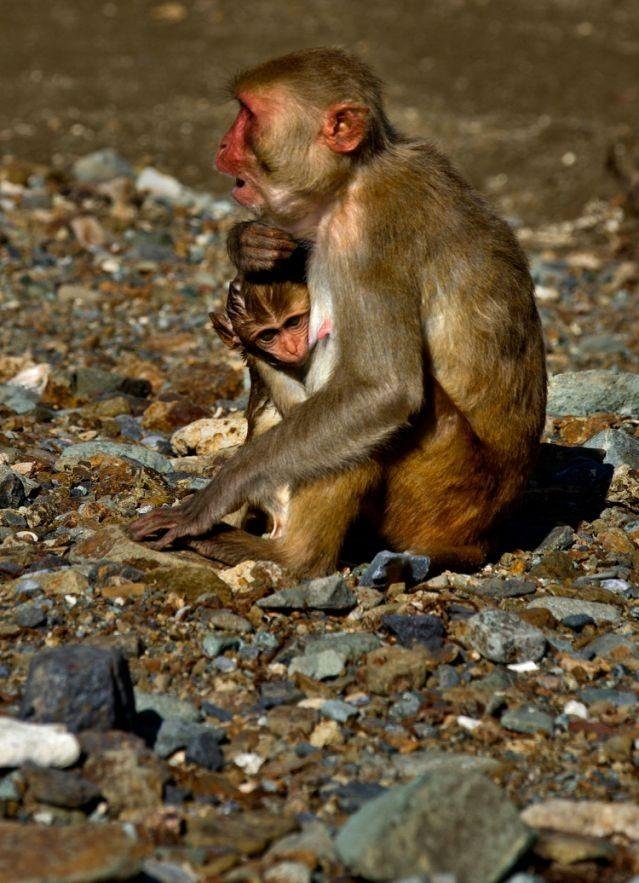
A female holds her baby
A female monkey holds her baby on Cayo Santiago, known as Monkey Island, in Puerto Rico on Oct. 4, 2017
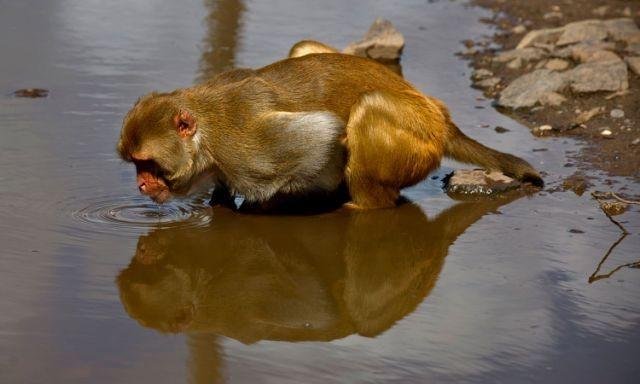
A monkey drinks from a puddle
A monkey drinks from a puddle on Cayo Santiago, known as Monkey Island, in Puerto Rico on Oct. 4, 2017. Researchers have been spending much of the year on the island studying everything from the monkeysâ eye movements to the genes and behavior of socially aberrant individuals that may provide insight into the causes of autism.
Source